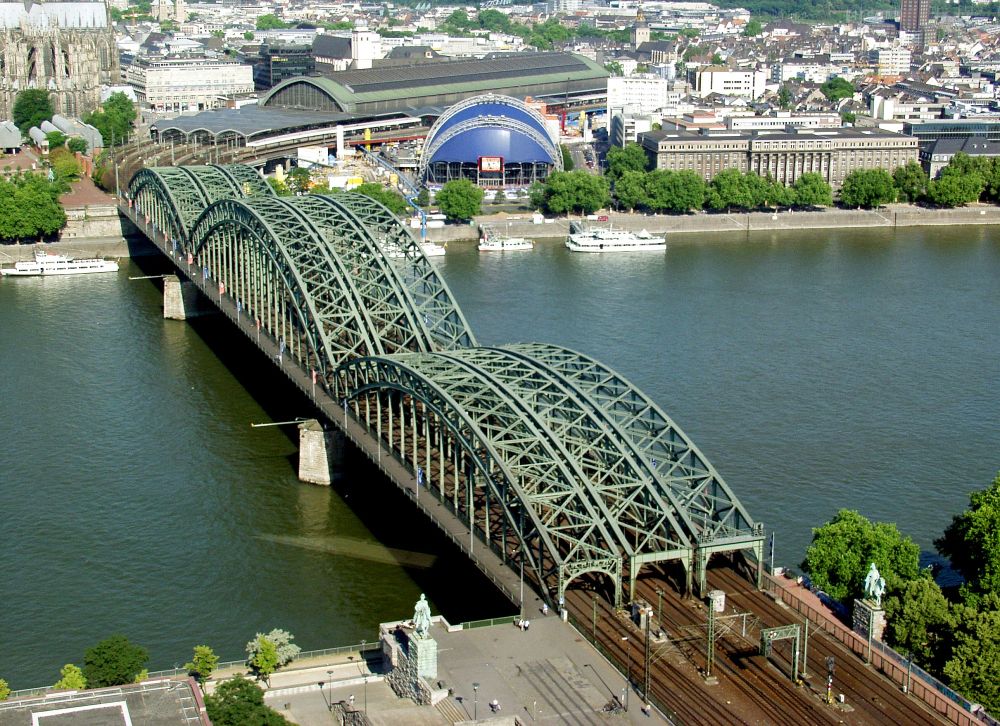

The Hohenzollern Bridge in Cologne is not just a functional structure but also a significant historical and cultural icon in Germany. Originally constructed between 1907 and 1911 to connect the east and west banks of the Rhine River, the Hohenzollern Bridge has played a vital role in Cologne's urban landscape and in its tourism sector. Named after the Hohenzollern dynasty, which had considerable influence in German history, the bridge has become one of the key attractions in the city.
The Hohenzollern Bridge initially featured both railway and pedestrian components until it was destroyed during World War II. After the war, it was reconstructed with an emphasis on rail and pedestrian traffic. Over the years, the bridge became synonymous with unparalleled views of the Cologne skyline, including the famous Cologne Cathedral, and formed a picturesque backdrop attracting tourists from all over the world.
Tourism at the Hohenzollern Bridge took on a romantic twist when couples started to attach "love locks" to its fence as a symbol of their affection. This trend, which started in the early 2000s, gained momentum across the world, turning the bridge into a pilgrimage site for lovers and a hotspot for romantic tourism. The ritual involves a couple writing their names on a padlock, attaching it to the bridge, and tossing the key into the Rhine River to symbolize unbreakable love.
While the "love locks" have been a significant draw, the Hohenzollern Bridge has also embraced other tourism trends. There has been a noticeable increase in culinary tourism, with visitors exploring the nearby restaurants and outdoor dining with a view of the bridge. Additionally, experiential and cultural tourism have seen rising interest, with tourists attending nearby cultural events and museums like the Ludwig Museum, which hosts contemporary artworks, just a stone's throw away from the bridge.
In recent years, there's been a conscious effort to balance the romantic tradition of the "love locks" with the need to preserve the structural integrity of the Hohenzollern Bridge. The weight of thousands of locks presented a concern, leading to periodic removals to ensure the bridge's longevity. This approach reflects a more significant trend in global tourism towards preservation and sustainability, emphasizing the importance of maintaining heritage structures for future generations while still encouraging their enjoyment today.
Present-day visitors to the Hohenzollern Bridge can enjoy guided tours that offer historical insights and anecdotes about Cologne and the bridge's impact on the city. The footpath on the bridge remains open for tourists to take in the breathtaking views of the Rhine River, the Cologne Cathedral, and the city's skyline. The tradition of attaching "love locks" continues, albeit regulated to sustain the bridge's safety and aesthetics. The Hohenzollern Bridge definitely stands as a testament to the city's resilience and as a beacon of romance, history, and culture for tourists far and wide.